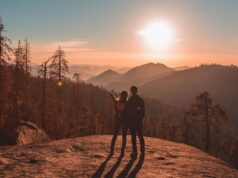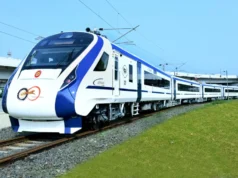Travelers now are enjoying the monsoon in all its splendor, which was formerly referred to as the “off-season” in travel. Slower and more immersive travel experiences are becoming more and more popular.
The Indian monsoon has been romanticized in literature, film, and song for many years. However, this time of year was long disregarded as the “off-season” for travel. The majority of travelers favored staying inside, traveling to foreign countries, or waiting for clearer sky. But that attitude is changing, particularly in the wake of the COVID-19 pandemic.
Today’s tourists desire more immersive, calmer experiences over exhilarating sightseeing. They are looking for the therapeutic touch of nature that the monsoon season brings, as well as emotional connection, peace, and introspection. India is transformed into a sensory experience that no other season can match as greenery blooms, waterfalls thunder, and mist shrouds the hills.
The Reasons the Monsoon Is Increasingly Favored
The increasing popularity of experience travel is one of the main motivators, according to Karan Agarwal, Director of Cox & Kings. According to him, “Travelers who wish to stop and refocus are best served by monsoon destinations.” The experiences that characterize monsoon holidays include strolling through soggy coffee estates, reading a book by the window in a woodland retreat, or striking up a discussion with locals over hot pakoras. Additionally, such authenticity is more important to a new generation of travelers than simply checking off popular tourist destinations.
Agarwal ascribes this shift in perspective to the way wellness tourism and seasonal travel have begun to converge. Because the body absorbs oils and herbs more readily during the monsoon, it is thought to be the best time of year for traditional Ayurvedic treatments. Nowadays, a lot of tourists plan their trips to accommodate their wellness requirements, selecting retreats in places like Kerala, Karnataka, or the Himalayan foothills to cleanse their bodies and minds.
Trends in Travel and Changes in Behavior
“Several internal industry data indicate that interest in monsoon-centric travel packages has increased by 30 to 40 percent year-over-year, especially between June and August,” says Agarwal. Domestic travelers are increasingly choosing to visit places like Meghalaya, Coorg, Munnar, Wayanad, and the Konkan Coast.
Late May and early June see the highest volume of searches for the “best monsoon getaways in India,” indicating increased interest and determination. “Travel habits have also changed,” he observes. People are choosing three- to five-day micro-trips, scheduled around long weekends or work-from-anywhere flexibility, over extended vacations. Monsoon vacations are now popular with families, lone travelers, and even senior couples looking for peaceful renewal; they are no longer just for experienced hikers or honeymooners.
Focus on Sustainability and Affordability
Another important consideration is affordability. Because hotel rates are typically lower during the rainy season, tourists can visit beautiful locations for less money. People are experimenting with less well-known places because of this financial incentive. According to Agarwal, modern travelers are considerate. “There is also a growing awareness about sustainable travel,” he says. Eco-sensitive areas like the Northeastern hills or the Western Ghats are frequently visited during monsoon season. Travelers that care about the environment are deliberately selecting accommodations and activities that have the least negative effects on the environment. This illustrates a broader shift in behavior where individuals are traveling to contribute rather than to consume.
From Emotional Seasoning to Seasonality
Holidays during the monsoon season are visually and spiritually pleasing. In contrast to summer vacations, which are frequently hectic and full of activities, the rains slow you down and provide for a very emotional experience.
Looking Ahead: Monsoon Tourism’s Ascent
“It’s safe to say that monsoon tourism is changing from a niche market to a powerful seasonal category in India’s travel landscape,” adds Agarwal. From carefully planned monsoon hikes and culinary adventures that highlight in-season fruit to music festivals, wellness retreats, and even photography excursions, there is a ton of room for inventiveness.
The rains provide more than just beauty for the contemporary traveler who is more in tune with nature, aware of their impact, and seeking out novel experiences. They provide calm, excitement, and a fresh sense of awe.







